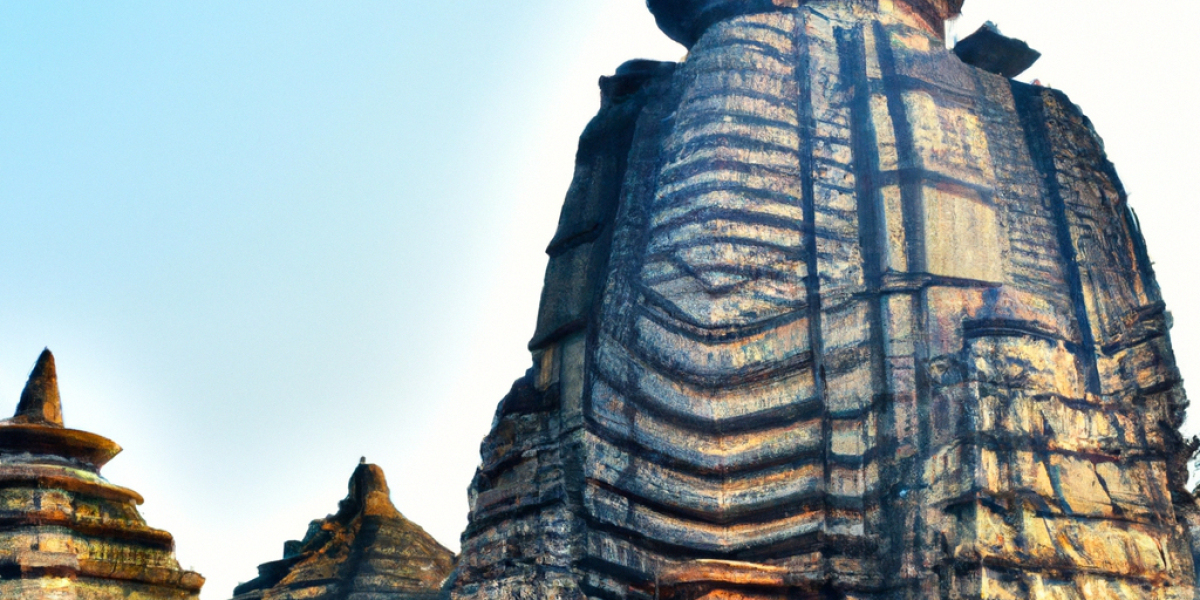Lingaraj Temple - A Marvel of Kalinga Architecture in Bhubaneswar, Odisha
The ancient city of Bhubaneswar, the capital of Odisha, is often referred to as the 'City of Temples'. Adorned with a rich tapestry of historical significance and spiritual fervor, it is home to over hundreds of temples. Among this sacred plethora, the Lingaraj Temple stands out as the largest and one of the most revered temples in the city. This majestic structure is not only a pivotal pilgrimage site for Hindus but also a hallmark of the classical Kalinga architectural style.
Dedicated to Harihara, a form of Shiva and Vishnu, the temple is a stunning edifice of faith that attracts devotees and tourists alike. Its construction dates back to the 11th century, spanning the reigns of several dynasties, with the majority of the current structure attributed to the Ganga dynasty's rule. The Lingaraj temple is more than just a religious site; it is a symbol of the historical growth and cultural evolution of the region.
Architectural Splendor
Exemplifying the quintessence of Kalinga architecture, the Lingaraj Temple is an architectural marvel with its soaring vimana (tower), intricately carved stone walls, and expansive complex. Spanning approximately 2.4 hectares, the temple compound comprises a main sanctum (sanctus sanctorum), numerous smaller shrines, and vast communal spaces. The main sanctum towers at 55 meters and is encircled by a series of smaller buildings, including the bhoga-mandapa (hall of offerings), nata-mandapa (dance hall), and yajna shala (sacrificial area).
Spiritual Traditions and Festivities
The Lingaraj Temple pulsates with spiritual life, especially during the festive occasions like Shivaratri and Ashokastami. Shivaratri sees the temple bathed in an ethereal glow as thousands of devotees congregate for all-night worship. The rituals and the overwhelming atmosphere during these festivals reflect the deep spiritual connection that the people share with this ancient edifice.
Cultural Importance
The temple is not only a place for religious worship but also a hub of cultural activities. Traditional dance and music performances, religious discourses, and the daily routines of worship in the temple unfold as part of a time-honored tradition that has been passed on through generations.
Preservation Efforts
Recognizing the Lingaraj Temple's significant historical and cultural value, efforts have been made to maintain and preserve this ancient structure. The Archaeological Survey of India (ASI) oversees the conservation work, balancing the need to maintain the integrity of the temple with the necessity of accommodating the steady flow of pilgrims and tourists.
Visiting Lingaraj Temple
For those planning to visit, it's essential to respect the cultural and sacred value of the temple. While non-Hindus may not enter the main sanctum, everyone can appreciate its grandeur from the outside and enjoy the peaceful environs of the temple complex.
Conclusion
The Lingaraj Temple is not just a religious structure but a living cultural phenomenon, a testament to the ardor of devotion and the brilliance of human craftsmanship. It remains one of the most exquisite articulations of the Kalinga architectural legacy and continues to cast its spiritual and historical enchantment on all those who visit.







